Charm and character define an antique kitchen, where vintage aesthetics meet practical functionality. Every detail, from weathered wood cabinets to farmhouse sinks and aged brass fixtures, contributes to a space that feels warm, inviting, and full of history. Unlike modern trends that come and go, antique elements bring a sense of nostalgia and craftsmanship that stands the test of time. Whether restoring a historic kitchen or infusing vintage touches into a contemporary space, carefully selected materials and finishes create an atmosphere that feels both elegant and lived-in. Thoughtful design choices bring authenticity, making the kitchen a true reflection of timeless beauty.
Distressed Apothecary-Style Cabinetry
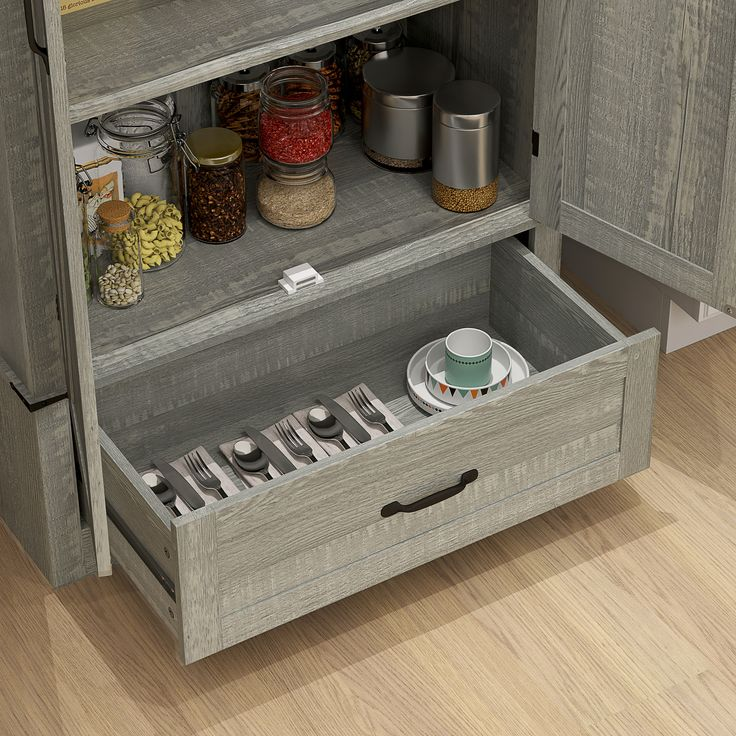
A kitchen designed around antique charm benefits from furniture-inspired cabinetry with a timeworn appeal. Distressed apothecary-style cabinets, often featuring multiple small drawers with label slots, introduce a nostalgic pharmacy-era aesthetic. These cabinets provide functional storage while serving as a focal point with their unique weathered finish. Using milk paint, crackle glaze, or hand-sanded edges enhances their aged authenticity. Pairing them with antique brass cup pulls or ceramic knobs further reinforces their vintage character. Their compact drawer layout works well for organizing spices, utensils, and linens. Placing them against exposed brick or beadboard paneling intensifies their old-world charm. For a cohesive look, complement the cabinetry with marble or butcher block countertops. Whether repurposed from an actual apothecary cabinet or custom-built for vintage appeal, this style creates an elegant yet practical storage solution that seamlessly integrates into a rustic, farmhouse, or Victorian-inspired kitchen setting.
Vintage Plate Rack with Open Display
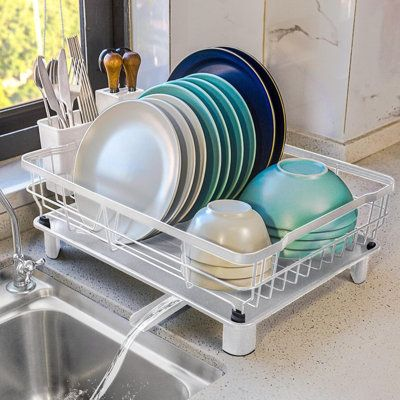
Displaying cherished dishware becomes effortless with a vintage plate rack, offering both organization and aesthetic appeal. Traditionally crafted from solid wood, these racks feature slatted or spindle-style dividers, allowing plates to stand upright while remaining easily accessible. Weathered finishes, such as whitewashed, stained oak, or distressed paint, enhance their nostalgic farmhouse look. Installing one above a countertop or sink provides a functional yet decorative storage solution, allowing heirloom china or everyday dishes to take center stage. Integrating this feature with a beadboard or shiplap backdrop amplifies its antique charm. Combining it with open shelving creates a harmonious blend of form and function, making small kitchens appear more spacious. Choosing a handcrafted or salvaged plate rack ensures authenticity while preserving vintage character. Whether mounted as a standalone display or incorporated into cabinetry, this timeless storage method highlights beautifully aged dishware and brings warmth to the kitchen.
Restored Antique Farmhouse Sink with Apron Front
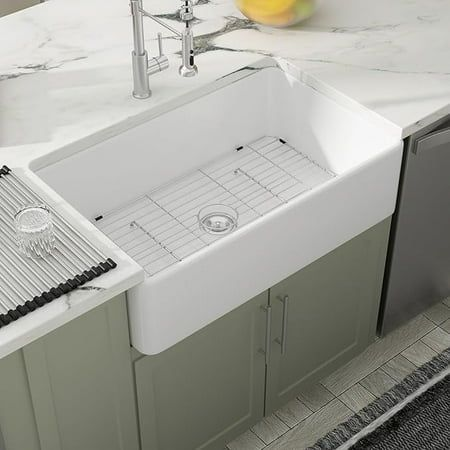
A kitchen steeped in history often features a deep, apron-front farmhouse sink that exudes timeless appeal. Restored antique sinks, typically crafted from cast iron or fireclay, bring authenticity to vintage-inspired spaces. Their generous basin accommodates oversized cookware, making them both practical and visually striking. Signs of wear, such as softened edges and patina, contribute to their well-loved charm. Pairing them with brass or oil-rubbed bronze bridge faucets enhances their period-correct aesthetic. A reclaimed wood or soapstone countertop complements the sink’s old-world elegance while reinforcing its durability. Many homeowners opt for salvaged sinks from historic homes, ensuring a unique, storied piece with character. Installation with a handcrafted apron support or exposed brackets completes the vintage farmhouse aesthetic. These sinks offer a striking contrast against modern conveniences, allowing kitchens to retain an authentic yet functional antique ambiance.
Antique Glass-Paneled Hutch for Open Storage
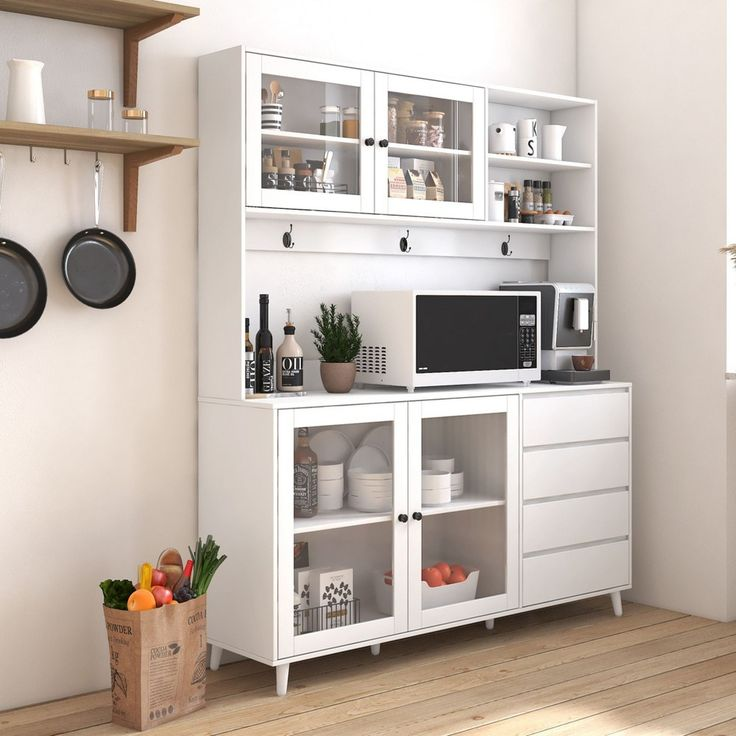
Displaying dishware and collectibles with vintage charm becomes effortless with an antique hutch featuring glass-paneled doors. These classic storage pieces, often crafted from solid oak, mahogany, or pine, showcase timeworn details like carved molding, scalloped edges, and original hardware. Glass panels, whether clear, frosted, or leaded, allow for easy visibility while protecting contents from dust. Restoring an antique hutch with a distressed or milk-painted finish enhances its nostalgic appeal, blending seamlessly into farmhouse and cottage-style kitchens. Positioning it against a beadboard or exposed brick wall amplifies its vintage authenticity. To maintain cohesion, styling shelves with mismatched ironstone dishes, hand-thrown pottery, or antique glass jars reinforces the old-world aesthetic. Whether used for daily essentials or as a curated display for treasured finds, this open storage solution adds warmth, character, and history to any kitchen while preserving the charm of bygone eras.
Patterned Tin Ceiling Tiles for Vintage Texture
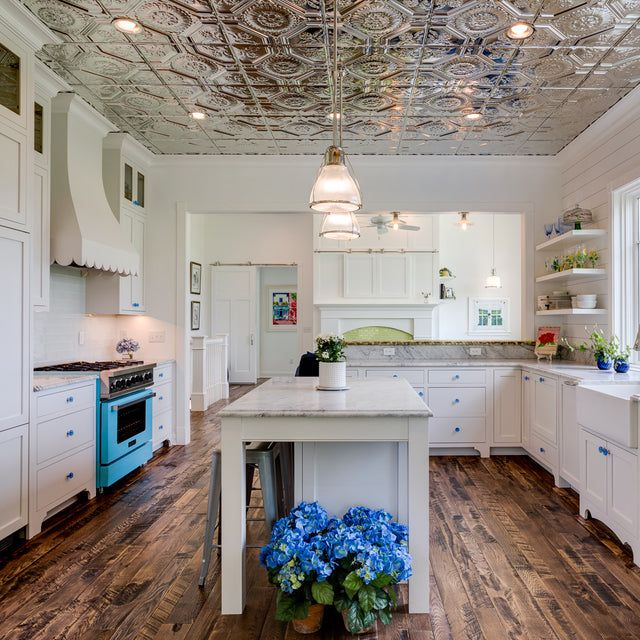
A well-preserved antique kitchen often features intricate ceiling details that enhance its nostalgic appeal. Patterned tin ceiling tiles, originally used in late 19th-century homes, add architectural interest and a touch of vintage grandeur. Their embossed floral, geometric, or scrollwork designs reflect historical craftsmanship while providing depth and texture overhead. Available in salvaged originals or reproduction finishes like aged pewter, antique brass, and hand-painted patinas, these tiles complement various vintage kitchen styles. Installing them as a full ceiling treatment or within a framed border creates a striking focal point. Alternatively, repurposing tin tiles as a backsplash or cabinet inserts brings cohesion to the design. These lightweight panels can be left in their naturally aged state or refinished with a soft patina for a more polished look. By embracing this historical detail, kitchens gain an old-world sophistication that feels both authentic and visually captivating.
Weathered Wood Kitchen Island with Carved Legs
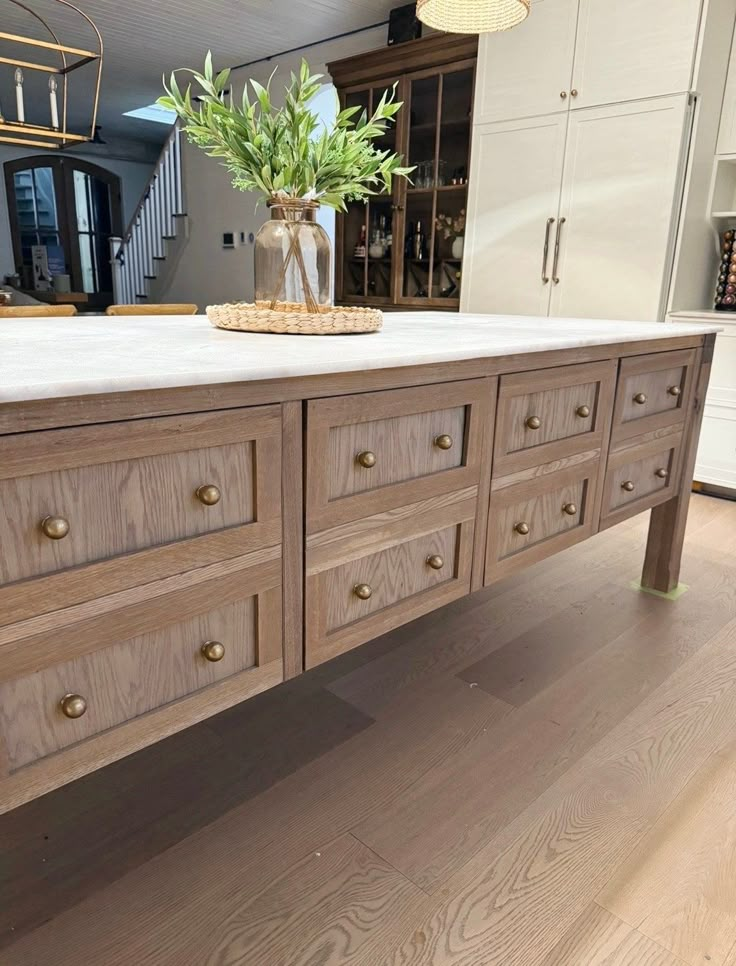
An antique-inspired kitchen benefits from the presence of a substantial, well-worn wood island with hand-carved detailing. These islands, often crafted from salvaged barn wood or repurposed furniture, bring a sense of history and craftsmanship to the space. Thick butcher block or soapstone countertops enhance their durability while maintaining an era-appropriate aesthetic. Turned or fluted legs, often found in Victorian or farmhouse styles, add refinement and authenticity. Functional additions like deep drawers, open shelving, or iron towel bars further enhance their practicality. Layering the island with mismatched stools or vintage-inspired pendant lighting completes the old-world appeal. Whether finished in a distressed milk paint or left in its naturally aged state, a weathered wood island stands as a timeless centerpiece, blending seamlessly with both rustic and refined antique kitchen decor.
Hanging Copper Pot Rail with Aged Finish
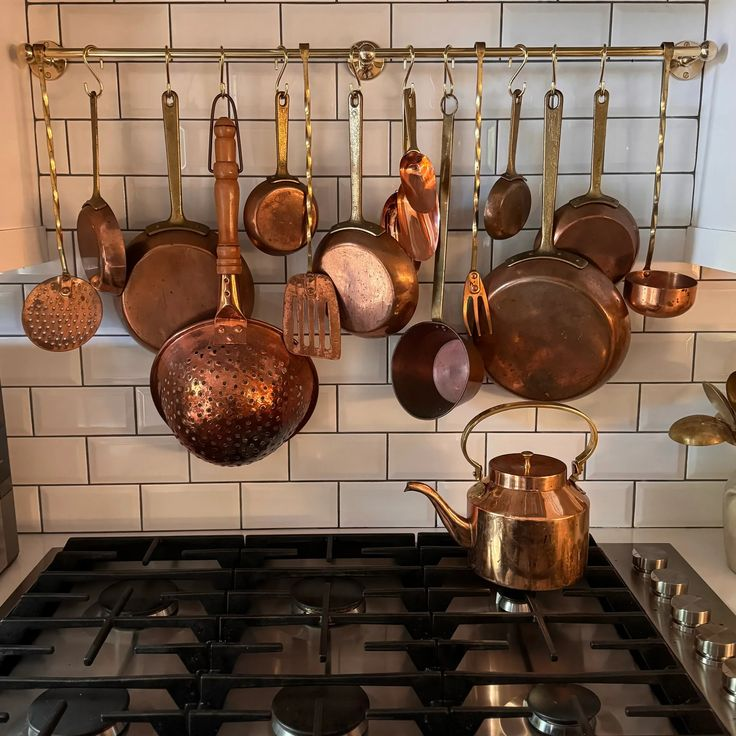
Storage solutions in vintage kitchens often prioritize function while maintaining period-correct aesthetics. A hanging copper pot rail, suspended from the ceiling or mounted against a tiled backsplash, creates a visually striking yet practical display. Aged copper, with its rich patina and warm undertones, evokes a sense of time-honored tradition while keeping frequently used cookware within reach. Selecting hand-hammered or antique-finished copper hooks enhances authenticity, ensuring seamless integration with rustic and French farmhouse kitchens alike. Pairing the rail with copper cookware, brass utensils, or wrought iron accents reinforces the cohesive vintage charm. To emphasize its old-world appeal, installing it above a cast iron stove or against exposed brick adds textural contrast. Over time, the natural patina of copper deepens, further enriching its character and timeless beauty.
Built-In Wall Niche for Spices and Oils
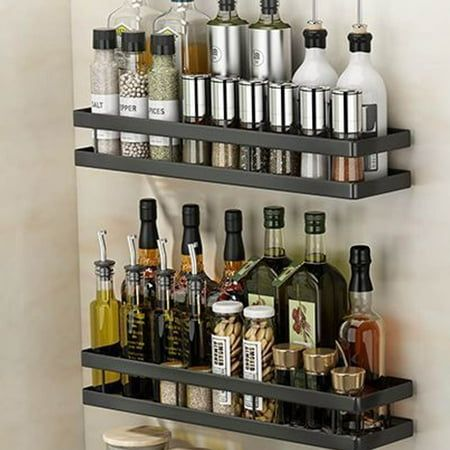
Historical kitchens often featured built-in wall niches, serving as efficient and decorative storage solutions. These recessed compartments, framed with wood trim or beadboard backing, provide the perfect space for neatly organizing spices, oils, and dried herbs. Designed for easy accessibility, they free up counter space while adding vintage charm. Installing salvaged wood shelves within the niche enhances its rustic appeal, while small brass or porcelain label holders reinforce the antique aesthetic. For a cohesive look, situating the niche near a cooking area ensures practicality, allowing everyday essentials to remain within reach. Soft backlighting or a muted wallpaper interior elevates the display, transforming it into a focal point rather than just a storage element. This timeless feature not only enhances functionality but also introduces a subtle architectural detail reminiscent of early 20th-century kitchens.
Antique Stained Glass Cabinet Inserts
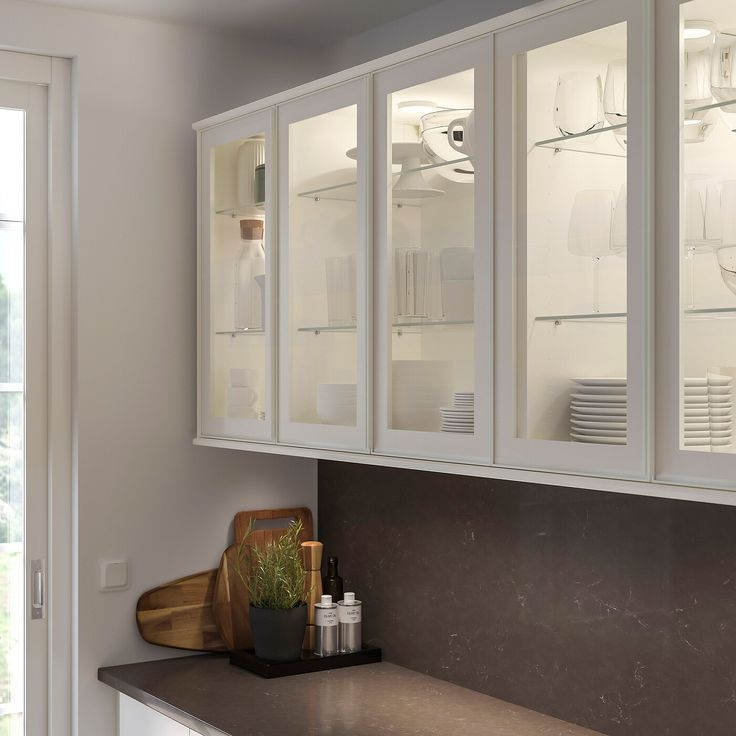
Kitchen cabinetry gains a distinct vintage character when enhanced with stained glass inserts. These colorful panels, commonly found in early 1900s homes, add a touch of artistry and nostalgia. Salvaged from historic buildings or custom-designed for an antique aesthetic, stained glass inserts feature intricate leaded patterns, floral motifs, or geometric designs. When installed in upper cabinet doors, they introduce color and texture while obscuring stored items. Paired with dark-stained wood or distressed white cabinetry, the glasswork becomes a striking focal point. Positioning these cabinets near a window allows natural light to filter through, illuminating the space with a soft, warm glow. Choosing glass with aged patina or crackled detailing ensures historical accuracy, seamlessly blending into vintage-inspired kitchens. This architectural element transforms cabinetry into a functional work of art, bringing both depth and authenticity to the overall kitchen design.
Vintage Library Ladder for Tall Storage Access
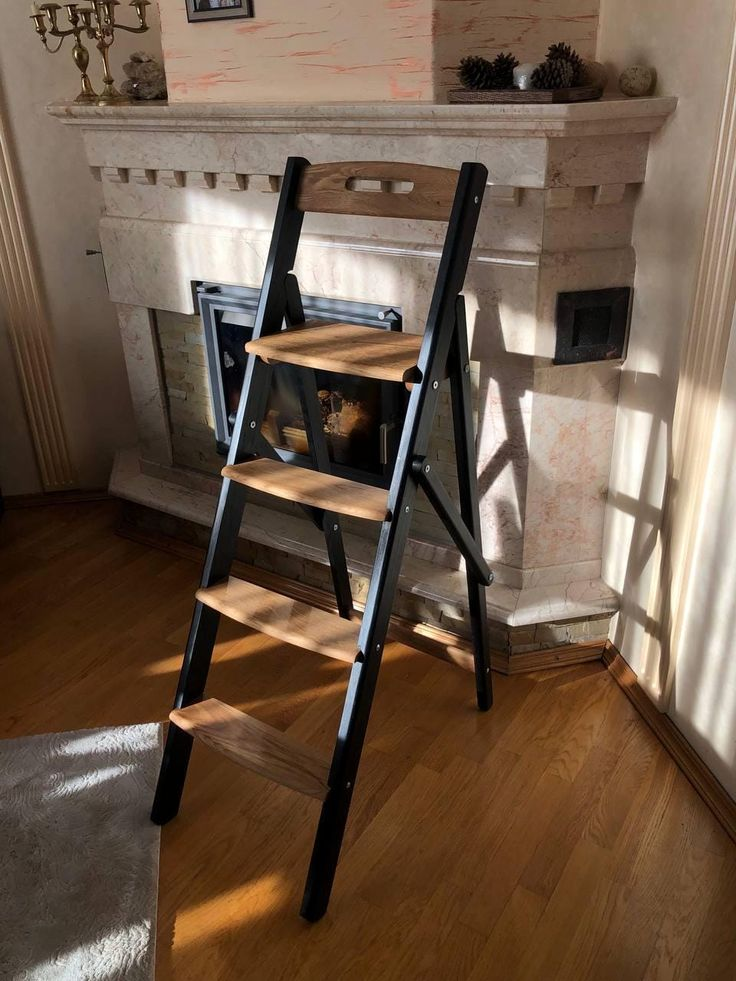
Ceiling-height cabinets in antique kitchens often present accessibility challenges, making a vintage library ladder both a functional and decorative addition. Crafted from solid wood with cast-iron rolling hardware, these ladders glide along a mounted rail, allowing seamless movement across high shelving. A naturally aged or distressed finish enhances its historical charm, ensuring it blends effortlessly with the surrounding cabinetry. Whether incorporated in a pantry, dish storage area, or as part of an open shelving unit, the ladder’s presence evokes an old-world aesthetic while maximizing vertical space. For a cohesive design, pairing it with reclaimed wood shelving and brass or iron hardware reinforces the kitchen’s antique appeal. Beyond functionality, the ladder serves as a nostalgic focal point, reminiscent of grand European libraries and traditional apothecary shops.
Worn Brick Backsplash with White Limewash
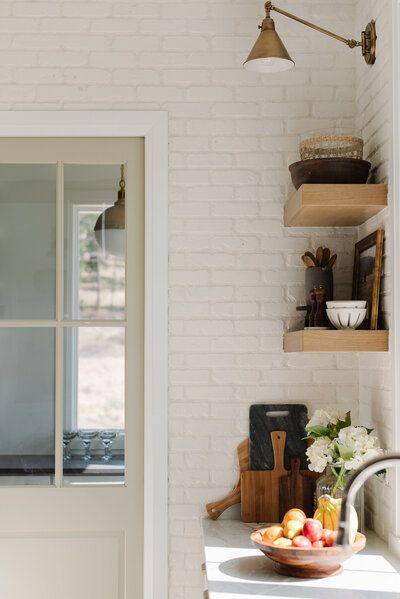
A timeworn brick backsplash offers a timeless, textural backdrop in an antique kitchen. The application of white limewash softens the natural red hues while allowing the organic variations of the brick to remain visible. Unlike uniform subway tiles, aged brick provides an imperfect, hand-laid appearance that enhances historical authenticity. The subtle, matte finish of limewash not only preserves the rustic character but also prevents the space from feeling overly dark. Over time, natural wear enhances the patina, adding to its aged appeal. Positioning this backsplash behind a cast iron stove or apron-front sink further reinforces its vintage charm. The combination of exposed brick and antique brass fixtures completes the old-world aesthetic, ensuring the kitchen feels both nostalgic and inviting.
Antique Buffet Repurposed as a Coffee Bar
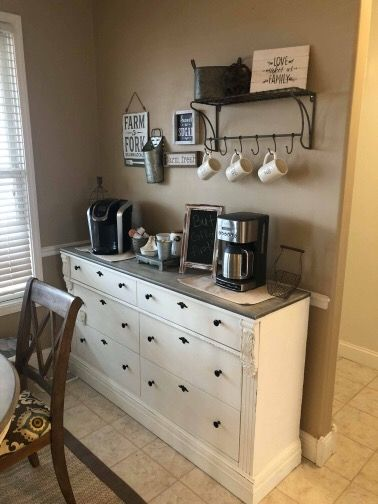
A well-aged buffet finds new life as a dedicated coffee station, blending vintage charm with modern functionality. Featuring deep drawers and spacious cabinets, an antique buffet provides ample storage for mugs, coffee beans, and brewing essentials. Its rich patina and ornate detailing—such as carved wood accents, brass keyhole hardware, or spindle legs—enhance the old-world appeal. A marble or butcher block top ensures a durable work surface, ideal for accommodating espresso machines or French presses. Installing a small wall-mounted rack above it for hanging cups or placing an antique tray with sugar and creamers reinforces its timeless character. Tucking a few woven baskets inside the lower cabinets keeps accessories neatly organized without compromising aesthetics. Positioned near a breakfast nook or in a cozy kitchen corner, this repurposed piece becomes a statement-making coffee bar that blends history with everyday convenience.
Wrought Iron Chandelier with Candlestick Bulbs
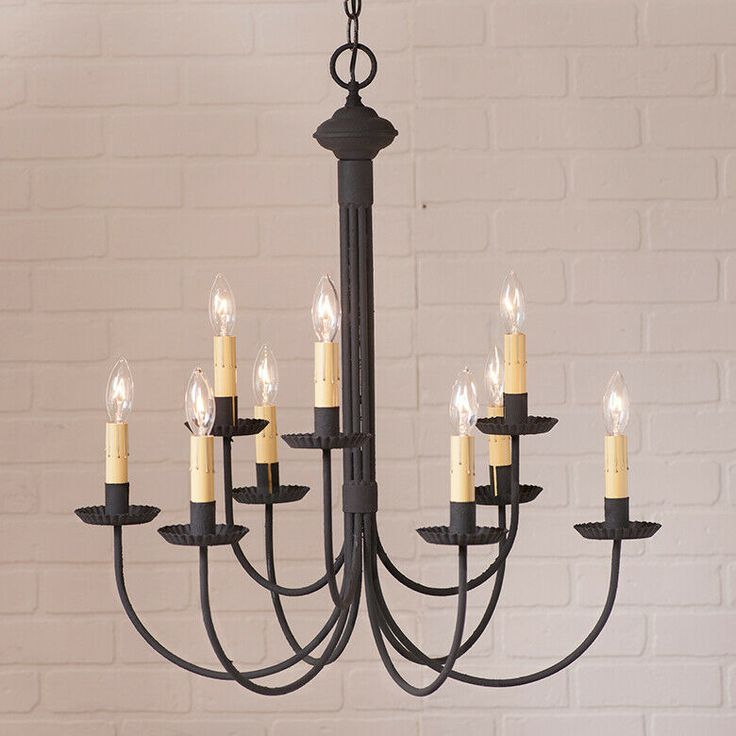
Soft, ambient lighting plays a crucial role in capturing an antique kitchen’s warmth, and a wrought iron chandelier provides the perfect balance of elegance and rustic appeal. Featuring hand-forged metalwork, scroll detailing, and curved arms, these chandeliers evoke the craftsmanship of historic European homes. Candlestick-style bulbs reinforce the vintage aesthetic, mimicking the glow of old-fashioned candlelight. Hanging one over a reclaimed wood dining table or kitchen island establishes a strong focal point while enhancing the space’s inviting atmosphere. Aged finishes such as oil-rubbed bronze, antique pewter, or distressed black further contribute to its authenticity. Complementing the chandelier with matching wrought iron hardware or light fixtures ensures a cohesive, timeworn aesthetic. Whether adorned with crystal accents for a touch of Victorian refinement or left in its raw, industrial form, this lighting choice anchors the kitchen in its historical charm.
Hand-Painted Backsplash Tiles with Aged Finish
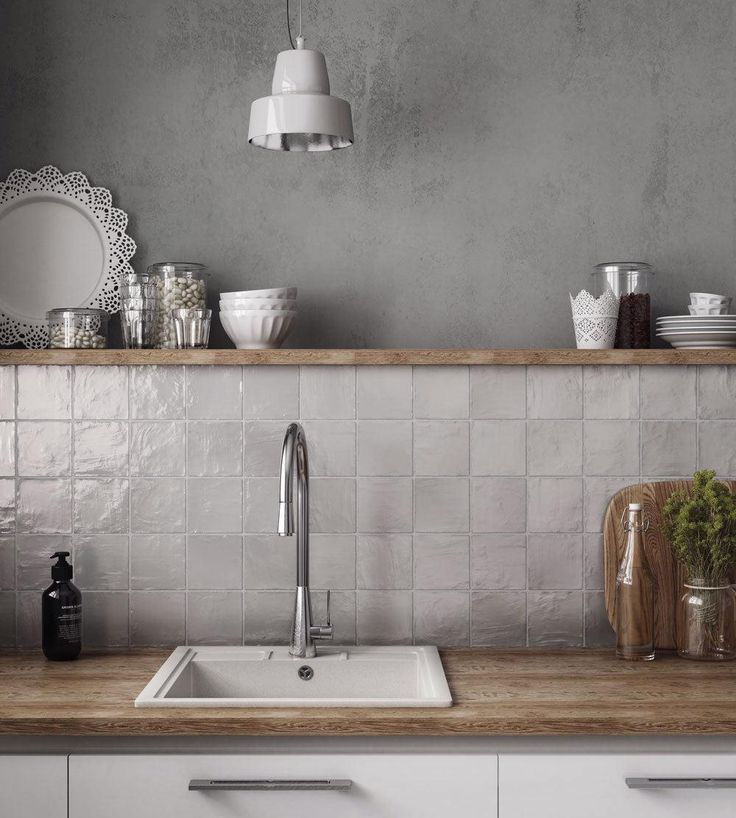
A kitchen backsplash serves as a canvas for artistic expression, and hand-painted tiles with an aged patina create an undeniable sense of history. Featuring intricate floral, geometric, or Moorish-inspired patterns, these tiles introduce color and personality while remaining true to antique aesthetics. Authentic terracotta, ceramic, or encaustic tiles naturally develop a soft-worn texture over time, reinforcing their vintage charm. Applying a gentle distressing technique or a subtle matte glaze mimics decades of use, ensuring the backsplash feels organically aged. Installing them in a patchwork layout enhances the eclectic appeal, while incorporating neutral grout preserves their old-world authenticity. Placing these tiles behind a farmhouse sink or stove creates an elegant focal point, blending craftsmanship with functionality. Whether sourced from antique markets or handmade by artisans, these backsplash tiles contribute to the enduring beauty of a well-preserved kitchen.
Reclaimed Wooden Ceiling Beams for Rustic Elegance

Timeworn wooden beams infuse an antique kitchen with character, depth, and architectural interest. Salvaged from barns, historic homes, or old mills, these beams showcase natural imperfections, including visible knots, saw marks, and a rich patina developed over decades. Their organic texture contrasts beautifully against smooth plastered walls, painted cabinetry, or tin ceilings, reinforcing the vintage appeal. Exposed beams work well in various antique kitchen styles, from French country to colonial farmhouse, adapting effortlessly to different color palettes and materials. Installing them in a dark-stained finish enhances their bold presence, while a lightly whitewashed treatment offers a softer, aged effect. When paired with wrought iron pendant lights or vintage-inspired lanterns, the beams further elevate the kitchen’s historical charm. Beyond aesthetics, their sturdy, time-tested construction adds architectural integrity, making them a foundational element in an authentically antique-inspired space.
